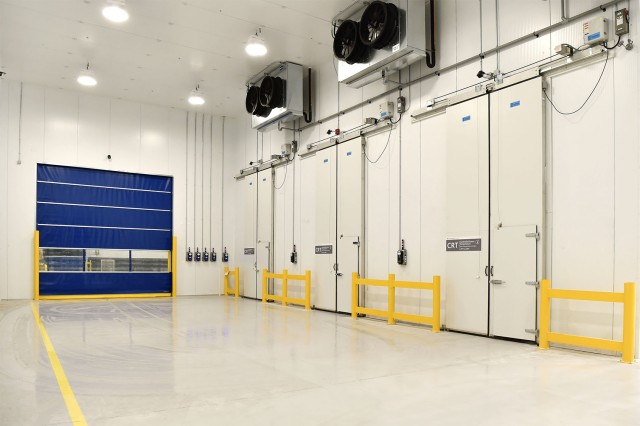Air Canada has announced the inauguration of Air Canada Cargo’s new cold chain handling facility at its Toronto Pearson International Airport cargo facility. The $16-million project was undertaken to expand and enhance Air Canada Cargo’s cold chain handling capabilities for shipments such as pharmaceuticals, fresh food and other perishables.
“This is an exciting day for Air Canada Cargo as we take another step forward in our evolution. The enhanced temperature-controlled facility is the only one of its kind for a Canadian airline and positions Air Canada Cargo to continue successfully growing our business, including the launch of our dedicated freighter aircraft. This investment, and the others that are to follow, will allow us to better serve our customers and I am very excited for what the future holds for Air Canada Cargo,” said Jason Berry, Vice President, Cargo, at Air Canada.
The upgraded facility will feature over 30,000 square feet square feet of temperature-controlled areas and an expanded cooler to fully meet the requirements of cold chain shipments, such as pharmaceuticals, fresh food and other perishables. These enhancements are the first step in a multi-year investment plan for the facility and are part of several planned infrastructure investment projects for Air Canada Cargo.
The extended cooler can accommodate more unit load devices (ULD) and loose shipments with COL (+2°C to +8°C) and CRT (+15°C to +25°C) temperature requirements, provide additional racking, and an upgraded dedicated area for active temperature control units.
To contribute to Air Canada’s long-term net zero emissions goal, the renovations included the installation of energy efficient equipment such as temperature controllers that will constantly monitor the conditions inside the facility and only regulate the temperature as needed, resulting in reduced energy consumption. As well, rapid roll-up doors have been installed to minimize the energy loss when the cooler is accessed to store or retrieve goods. LED lighting has been installed throughout the facility, further reducing energy consumption.





